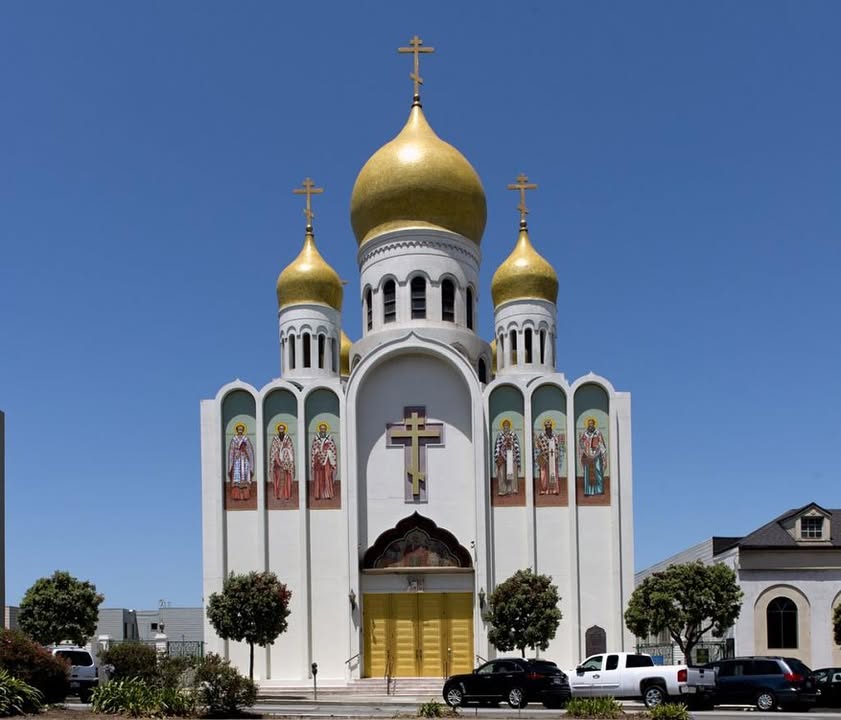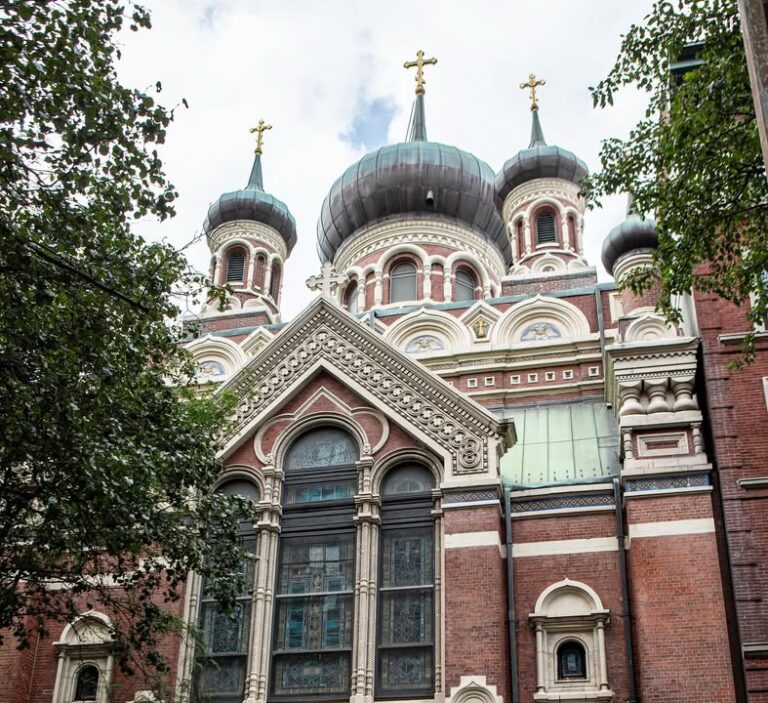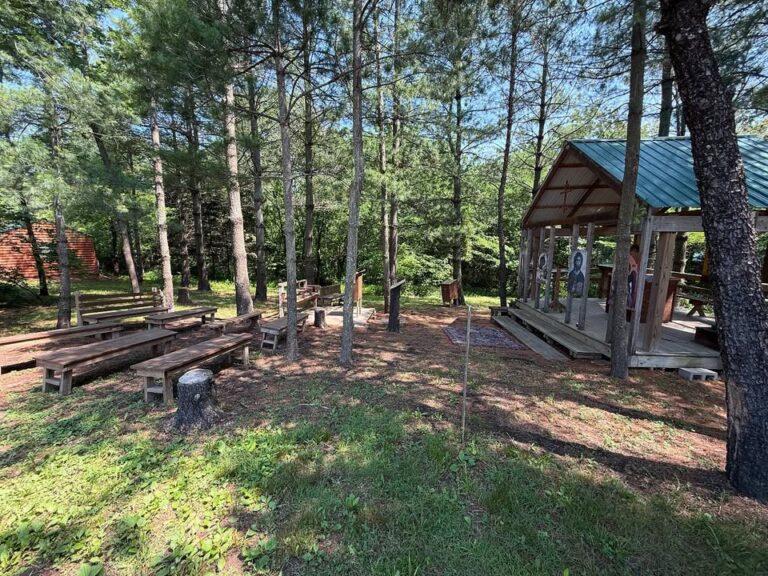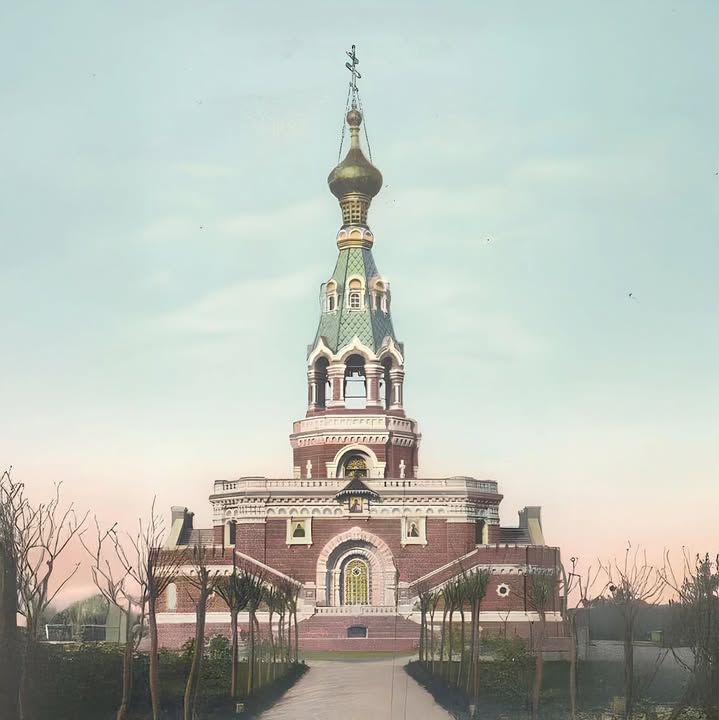Golden domes that dazzle—yet feel borrowed and bold. After Orthodoxy’s…
Golden domes that dazzle—yet feel borrowed and bold.
After Orthodoxy’s migration south from Alaska in 1867, San Francisco became home to one of the most ambitious Russian-style cathedrals in America. Designed by émigré architect Anatoly Abramov-Neratov, the Holy Virgin Cathedral (1961–65) commands attention: five towering onion domes, glinting in 24-karat gold mosaic, perch above a cross-in-square concrete volume stripped of interior columns and clad in white-and-crimson elevations with seven keel arches across each façade.
But as an architect, I can’t help but see the dissonance. The domes—especially the central one—feel oversized, as if lifted from another building entirely, dropped onto a form that cannot quite support their visual weight. Their proportions overwhelm the compact base and distort the silhouette; what should crown the structure ends up consuming it. And the gold? Less gilded mystery, more synthetic gleam—a color tone that strays dangerously close to plastic, almost like a mass-market imitation of sacredness.
Still, there’s a strange beauty in its audacity. The cathedral may not follow the rules of traditional Orthodox harmony, but its scale, surface, and story make it impossible to ignore.
#holyvirgincathedral #sanfranciscoarchitecture #orthodoxdesign #architecturalcritique #molodin #aleksandrmolodin #molodinarchitect #byzantinemodernism















